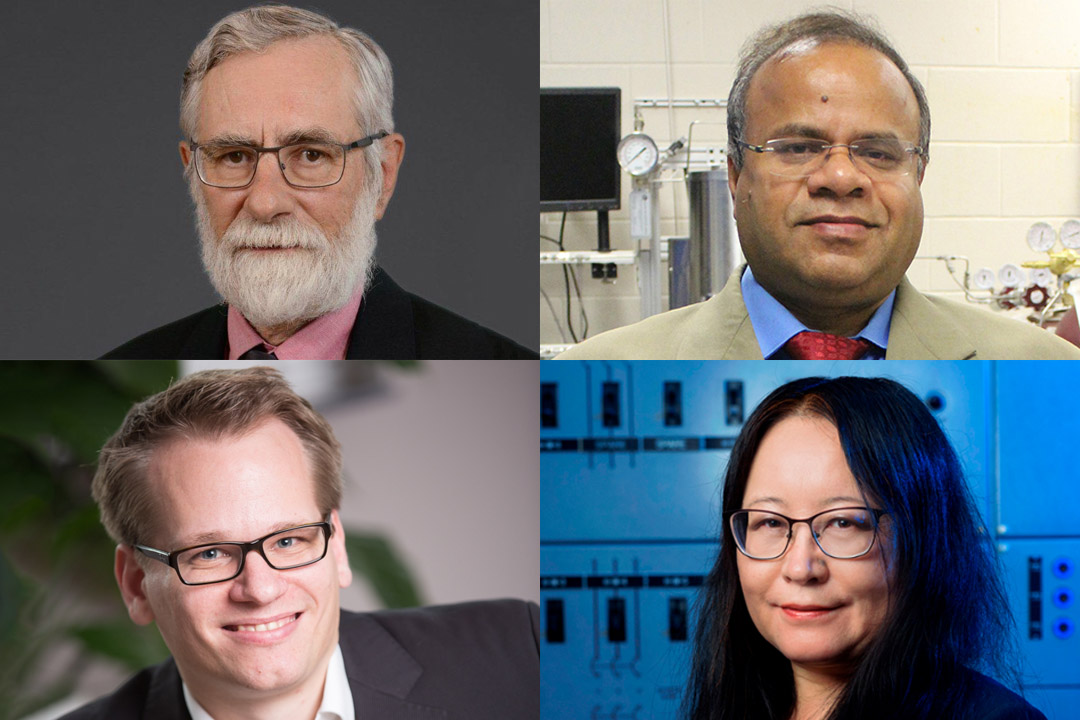
Major USask awards honour researchers for significant contributions
The University of Saskatchewan (USask) has announced its four major annual awards that recognize significant contributions to knowledge or artistic creativity by members of its research community.
By Sarath PeirisUSask’s Distinguished Researchers for 2022 are both nationally and internationally renowned and have served the university and the province for decades.
Asthma and allergen researcher Dr. Don Cockcroft (MD) has changed the world’s understanding of asthma and its management, with his work over the past 47 years. The prolific research of chemical engineer Dr. Ajay Dalai (PhD) has also made major impacts for 25 years in the fields of bioenergy, heavy oil and gas processing, and environmentally safe remediation of wastewater and waste gas streams.
USask has also recognized Dr. Markus Brinkmann (PhD) and Dr. Xiaodong Liang (PhD) as its two New Researchers for this year. Brinkmann has been developing a world-class research program in aquatic ecotoxicology since joining USask’s faculty in 2018, while Liang has been building an impactful research program to improve the reliability of renewable energy-based microgrids for northern and remote communities, since arriving on campus in 2019.
Dr. Don Cockcroft: Asthma is an inflammatory disease
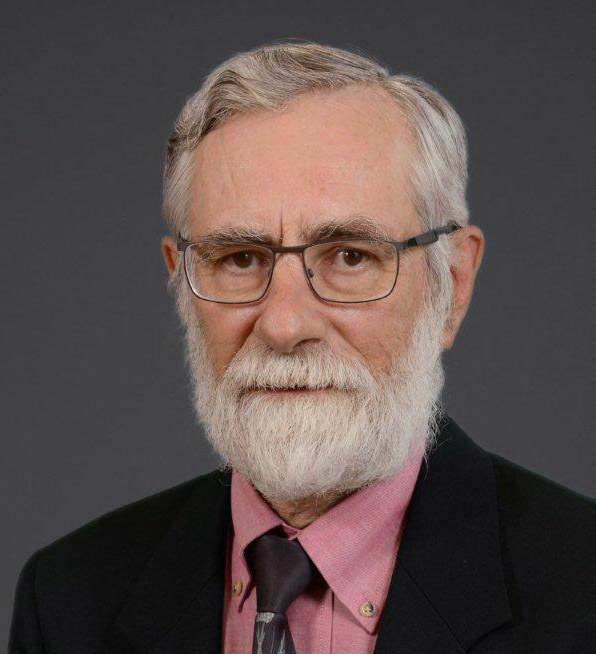
“The award was a very pleasant surprise,” said Cockcroft, professor in the Division of Respirology, Critical Care and Sleep Medicine at USask’s College of Medicine, where he been on faculty since 1977 as a clinician scientist focused on respirology.
“I am humbled to be recognized for something I actually love to do, which is why I am still doing at three-quarters of a century in age,” said Cockcroft, who became enamoured of respiratory clinical research while training with Dr. Freddy Hargreave (MD) at McMaster University before joining USask.
Cockcroft cites as one of his proudest accomplishments the discovery that exposure to allergens actually worsened the hyperresponsiveness of airways—an innovative idea that contributed to changing the world’s thinking away from asthma as a simple bronchospastic disease to categorizing it as an inflammatory disease.
He also notes as a major accomplishment an unexpected research finding, confirmed repeatedly in studies since, that frequent use of beta-agonist bronchodilators (which open airways by relaxing muscles around the airway) to treat asthma increased airway responsiveness to allergen. This is a potential explanation for how bronchodilators, which relieve symptoms and improve lung function, actually worsen asthma, especially when used without proper controller medication.
Cockcroft was also instrumental in developing the methacholine challenge method, which since 1977 has become the standard test used worldwide to assess the responsiveness of airways in diagnosing asthma. He has earned global recognition and impact as a final author or co-author of more than 350 papers, five books and 51 book chapters, and has been the principal investigator for several million dollars in funding from industry and granting bodies. This work has led to more than 50,000 citations including nearly 15,000 citations for a paper he wrote on a formula he developed as a medical resident. The Creatine Clearance Formula is one of the most used worldwide today to assess kidney disease.
Cockcroft has contributed to supervising or advising more than 70 highly qualified personnel. He has received recognition from numerous professional societies and is a past president of the Canadian Thoracic Society.
Cockcroft will be honoured at USask’s Spring Convocation on June 9.
Dr. Ajay Dalai: Bioenergy for sustainable societies
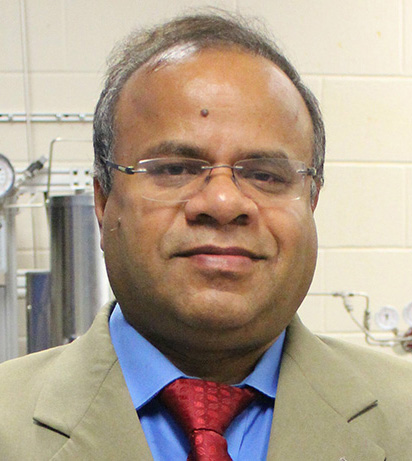
“I very much appreciate receiving the university’s premier award, which recognizes research as a top priority,” said Dalai, distinguished professor of chemical and biological engineering in the College of Engineering and Canada Research Chair (CRC) of Bioenergy and Environmentally Friendly Chemical Processing.
“This award has added value in terms of both as motivation to continue to do high quality research, and for the image and reputation of my department, college and the university. This is also a tribute to the entire team of researchers who have worked with me over the past 25-plus years.”
Dalai, who joined USask as a petroleum engineer, changed direction to bioenergy in July 2001, when he was awarded a Tier II CRC that was upgraded in 2009 to the current Tier 1. He is USask’s longest-serving CRC today.
Bioenergy research, which includes turning agricultural and forestry industry residues into bio pellets, liquid and gaseous fuels, and biochar, is helping to contribute more to society with a sustainable approach to meeting energy demands, Dalai said. Sustainability in petroleum means reducing emissions from production and processing, which his research helps to achieve by developing and applying nanocatalytic materials.
Dalai has published more than 600 papers in international journals, books, and conference proceedings, which have been cited 34,000 times. Dalai’s research projects, often in collaboration with industry, have been awarded more than $36 million by granting agencies such as the Natural Sciences and Engineering Research Council, the Canada Foundation for Innovation, other government agencies and industry.
Dalai attributes part of his prolific research successes to recruiting and training some of the best people worldwide. The 25 to 35 students working in his labs annually bring an internal flavour to the teams, and he has supervised and graduated 36 PhDs and 50 master’s students, and many post-doctoral and undergraduate students.
Dalai has been recognized nationally and internationally with awards and fellowships from nine professional societies. The Royal Society of Canada in 2020 awarded him the country’s highest honour for academics—the Miroslaw Romanowski Medal.
Dalai will be honoured at USask’s Fall Convocation on Nov. 9.
Dr. Markus Brinkmann: protecting environment from chemical impacts
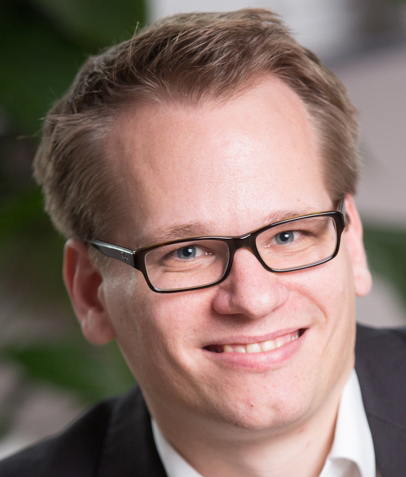
“I was deeply humbled by the announcement,” said Brinkmann, assistant professor in the School of Environment and Sustainability (SENS), about being named USask’s New Researcher.
“It comes down to having a really awesome team who all put their hearts and souls into their work,” he said. “Everyone is trying to do their part in protecting the environment from chemical impacts, so I’m really happy that it’s being seen and recognized for the hard and important work it is.”
Brinkmann, who joined the SENS faculty in 2018 after attending USask on a prestigious two-year Banting Fellowship, is developing “an exceptional, world-class research program that is making multiple important impacts on society,” wrote SENS Executive Director Dr. Karsten Liber (PhD) and Dr. John Giesy (PhD), former CRC in Environmental Toxicology, who nominated him.
Brinkmann has received media attention for his prominent role in USask’s Wastewater Surveillance Team that has become the sole source in Saskatchewan for reliable data on the status of COVID-19 in Saskatoon, Prince Albert, North Battleford, on some First Nations, and in USask dormitories. The COVID-19 tracking was a socially impactful and strategic offshoot of a monitoring program that Brinkmann, an aquatic ecotoxicologist and risk assessment expert, had developed with the City of Saskatoon to measure pharmaceuticals in wastewater.
However, his work covers a wider spectrum of aquatic research, including monitoring stormwater for 6PPD-quinone—the oxidized form of a protective chemical compound in rubber tires that’s shed on roadways. His team’s recent finding that 6PPD-quinone is toxic to culturally and commercially important rainbow and brook trout in Western Canada places SENS and USask at the fore of research to mitigate this emerging pollution issue.
As well, his groundbreaking work with European colleagues on metal toxicity affecting endangered eels is influencing European Commission policy. Coupled with his novel research to determine how stream and river discharges affect the concentrations of chemical pollutants and thus aquatic life, Brinkmann’s work ties in closely with most of USask’s signature research areas.
Dr. Xiaodong Liang: unique CRC helps to power remote communities
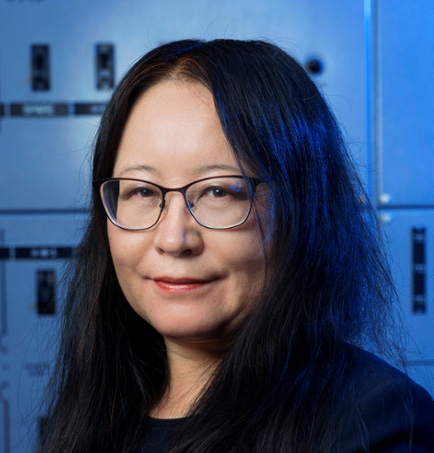
“I am deeply honoured to receive this award, and thankful for the great support for my research program from the department, college and university,” said Liang, who joined USask’s College of Engineering in 2019 as an associate professor and candidate for a Tier II Canada Research Chair (CRC).
She was awarded the first-of-its kind CRC in Technology Solutions for Energy Security in Remote, Northern and Indigenous Communities in June 2020, when the COVID-19 pandemic was curtailing air travel.
“So, my students came late. They and my research collaborators worked really hard, which helped me receive this university-level recognition,” she said.
Liang is building a highly impactful research program that aims to develop technologies for isolated small-scale microgrids powered by renewable energy such as wind and solar. The research focuses specially on technical aspects that have the greatest impact on distributing power to small remote northern communities in Canada and elsewhere around the globe.
Her students are assigned to work on various projects forming cutting-edge research themes: developing new methods to monitor small, self-contained power grids and detect faults that could disrupt power or damage the system; designing self-healing systems by developing controls that allow the grid to quickly adapt to a fault and continue delivering power; and integrating advanced control techniques to manage power and regulate voltage and frequency in response to abrupt surges of power or sudden drops in load, and fluctuations in energy generation from solar and wind.
Liang has published more than 85 refereed journal papers and 100 refereed conference papers and holds three Canadian and American patents. She also has been named to Stanford’s top two per cent list of the most-cited researchers worldwide in her field.
In her teaching career that spans USask, Memorial University in Newfoundland and Washington State University since 2013, Liang has trained more than 40 highly qualified personnel (HQP), and her methods have resulted in top-tier journal publication and awards for her HQP.

